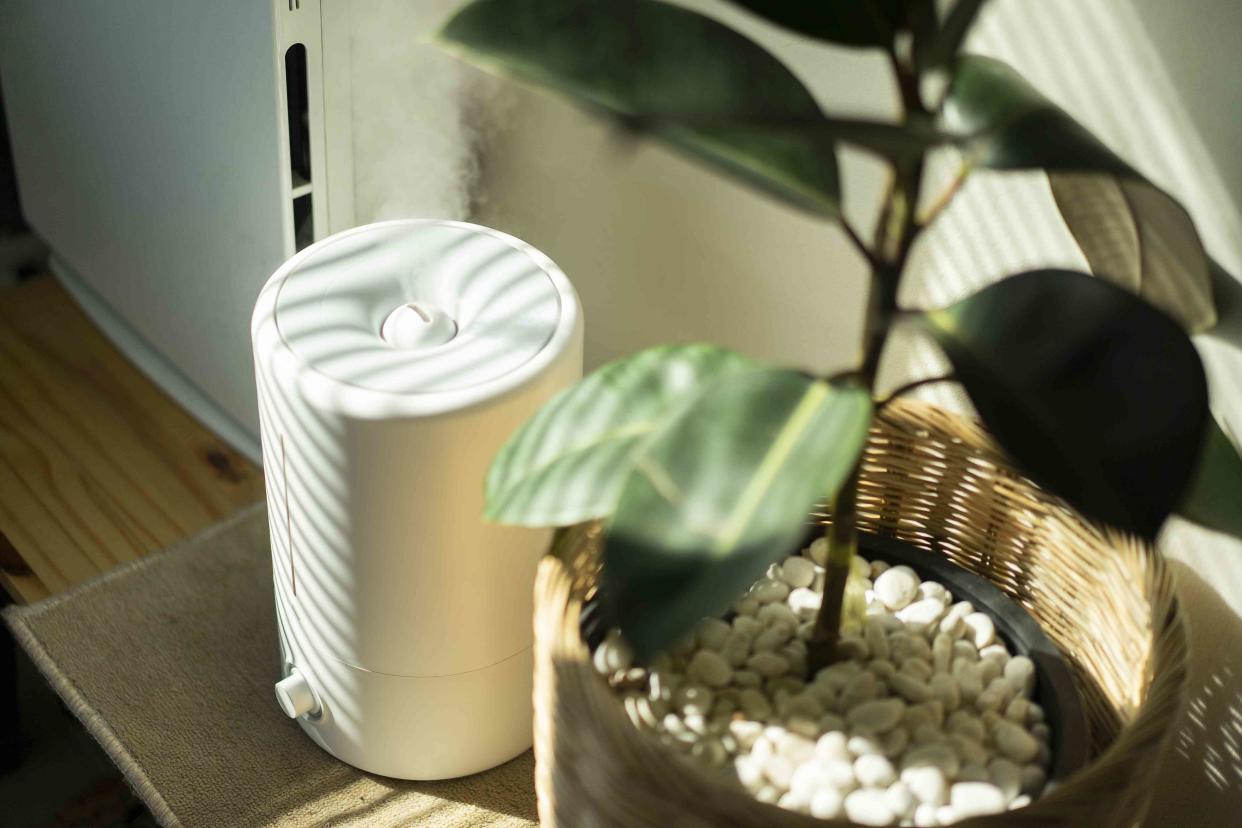Is Sleeping with a Humidifier Really the Secret to Preventing Dry Skin in the Winter?

Getty Images
You're not imagining it: frigid winter air or blasting your air conditioner during the summer does make your skin dry and flaky. The reason? Both of these external factors draw moisture out of the air and, as such, your skin.
So, while slapping on moisturizer and lip balm before heading out in the cold or slathering on a rich night cream before bed will help with dryness, adding moisture back into the air is what will really help restore your skin. Enter humidifiers: a simple addition to your bedside table.
While a humidifier shouldn't replace your skincare routine, the device can help supplement your regular product lineup. Ahead, dermatologists break down the skincare benefits of using a humidifier while you sleep and how to properly use one.
:
What skincare benefits does a humidifier offer?
A humidifier increases moisture levels in the air by adding water vapor back into it. "In addition to helping clear airways and keeping nasal passages moist — which is especially important for those who are prone to allergies and nosebleeds — humidifiers can help keep hair and skin hydrated," says Dr. Geeta Yadav, a board-certified dermatologist and founder of FACET Dermatology.
They add moisture to the air and boost humidity, which in turn, helps prevent skin from drying out. Board-certified dermatologist Dr. Marisa Garshick notes that the optimal humidity levels for skin are 30%-50%.
How to use a humidifier to prevent dry skin:
While adding a humidifier to your bedroom can be beneficial year-round, board-certified dermatologist Dr. Kavita Mariwalla says they're especially helpful in the winter for those with conditions with a compromised skin barrier.
"Humidity is great for preventing skin from drying out — I love humidifiers in winter for patients with eczema and acne since acne meds are so drying on the skin," she says. "It's also good for those who wake up with a lot of congestion, a dry mouth, or sore throat."
It's important to pair the use of a humidifier with a complimentary skincare routine. Dr. Garshick says combining moisturizing creams and serums with a humidifier is key. "A humidifier does not replace topical skincare products as moisturizers and serums are not only trying to add moisture back into the skin, but also use ingredients that help to support and strengthen the skin barrier to prevent moisture loss and can also provide an occlusive effect to help seal in any moisture."
And while humidifiers are safe for all skin types to use daily, it is important to keep them clean. "Humidifiers need to be kept clean or else you can be breathing in dirty water vapor droplets but otherwise they have very little risk," Dr. Mariwalla says.
:
What's the difference between humidifiers and face steamers?
Humidifiers and face steamers are both trending in skincare right now, and while both devices seem similar, they serve difference purposes.
While humidifiers simply add water back into to the air which in turn does help keep skin moisturized, facial steamers steam the skin as part of a skincare routine. Dr. Yadav says a steamer is designed to soften dead skin, ease exfoliation for smoother extractions (which she doesn't recommend doing at home), and better absorption of skincare products.
Dr. Mariwalla adds that humidifiers change the characteristics of the environment of the room you're in, rather than decongest your pores as a steamer does. "A humidifier is really a way to change the characteristics of the environment you are in so that you can maintain and support a healthy skin barrier," she explains. "Keep in mind that transepidermal water loss (TEWL) is increased at night due to an increase in body temperature. Humidifiers will help balance out that natural water loss from the skin by decreasing it due to a humid environment — water leaves the skin at a faster rate in a dry hot room than it would in a humid warm room."
For more InStyle news, make sure to sign up for our newsletter!
Read the original article on InStyle.

